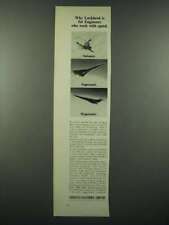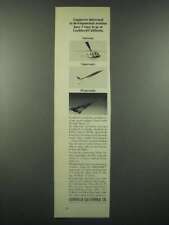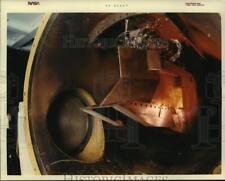
NASA may come one step closer to faster, less expensive and more reliable access to space if the X-43A vehicle has its first successful test flight on March 27, according to a University of Missouri-Rolla (UMR) researcher who helped design and analyze its propulsion system.
Dr. Dave Riggins, professor of mechanical and aerospace engineering at UMR, helped evaluate and optimize the vehicle’s engine flow path through computer simulation and analysis over the past 10 years. The X-43A has been designed to fly at Mach 7, which is seven times the speed of sound and far faster than any previous air-breathing aircraft.
Unlike rockets, which carry their own oxygen for combustion, or other aircrafts, which usually rely on turbine machinery in their engines, the X-43A is an air-breathing vehicle without turbine machinery that burns the oxygen in air it scoops from the atmosphere.
Once the booster burns out, the unpiloted X-43A will separate from the rocket and fly under its own power for approximately 10-15 seconds before landing into the Pacific Ocean. “It’s a very heavily instrumented vehicle and all the information will be sent back by telemetry as it’s in flight,” Riggins says.
NASA plans to test the vehicle with a March 27 launch. If the launch is successful, the technology will likely be used to help vastly improve the efficiently of current vehicles used in high-speed atmospheric flight as well as revolutionize access to space, Riggins says.
“Numerous studies have shown that if you take advantage of the air-breathing capacity, you can get significantly more into orbit and the cost per kilogram put into orbit goes way down,” Riggins explains. “The U.S. Department of Defense is interested in not just access to space but also what they call ‘global reach.’ They would like to be able to launch a mission from the continental United States to anyplace on the globe and reach that destination in a couple of hours and return and not have to rely on foreign bases or in-flight refueling.”
Three X-43A vehicles, measuring 12 feet long with a span of approximately 5 feet, have been built as part of the research program. The first vehicle was lost before it could be deployed when a rocket booster failed in a 2002 test.
“The first flight failed because the rocket went out of control long before the vehicle was deployed,” Riggins says. “I was actually in the East Coast data control room. It was a very disappointing time mainly because we never got to what the test was all about. It’s a very high-risk, but potentially very high pay-off technology. If it works, it will be a major milestone in aviation.”


















Comments are closed.